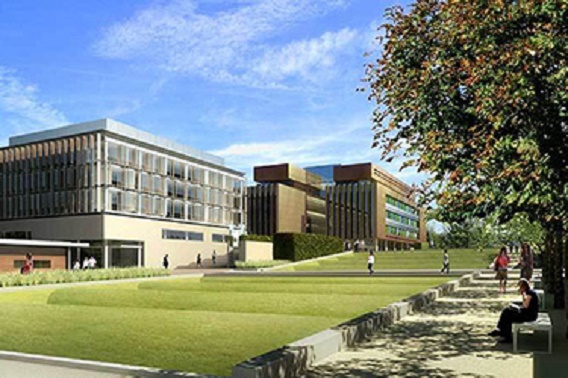University of Southampton: Southampton scientists discover a fundamental feature of aggressive lymphomas
Research led by the University of Southampton has revealed a new fundamental feature of aggressive B-cell lymphomas which could open the door to further research into early detection and treatment of the disease.
Over 14,000 people are diagnosed with lymphoma each year in the UK, making it the fifth most common cancer and the most common blood cancer (Source: Blood Cancer UK).
In this new study, a team led by Prof. Francesco Forconi, identified a tumour-specific change, not seen in normal B cells. B cells are part of the human body’s immune system and are responsible for producing antibodies; they display an antibody-like molecule on their surface, known as the B-cell receptor. The new findings have shown how the receptors can differ in aggressive lymphomas by the presence of unusual sugars, known as glycans, in the antigen-binding sites of the lymphoma B-cell receptor.
The findings have been published in Blood, the Journal of the American Society of Haematology.
The team, which included glycobiologist Prof. Max Crispin and cancer immunologist Prof. Freda Stevenson, have revealed that these glycans have a specific structure that allow the lymphoma cells to receive signals from molecules called “lectins”, which are attached to surrounding cells, enabling the tumour to survive – and grow – in the lymph nodes.
The genetic characteristics of these lymphomas have been described with lymphoma expert Louis Staudt based at the National Institute of Health, Bethesda, USA. The team also include Prof. Thomas Bowden from the Division of Structural Biology, University of Oxford, who determined the three-dimensional structure of a fragment of the receptor containing the unusual glycans.
Francesco Forconi, Professor of Haematology at the University of Southampton said, “this very exciting team-work describes the structure of the glycans covering the surface of the tumour’s B-cell receptor and how it works. It is a remarkable tumour-specific feature required by all the tumour cells of patients with the most common lymphomas.”
Prof. Forconi continued “this is a new specificity required by the lymphoma cells to survive which we now know how to detect and are learning how it functions. Our findings are paving the way to further investigations, including early cancer detection and therapeutic targeting, both of which will be our future goals”.
The study has been funded by Blood Cancer UK charity and the Keanu Eyles Fellowship. One of the next steps will be to precisely target the interactions between these glycans and the lectins by therapeutic antibodies that are being developed by Forconi’s team in collaboration with the Antibody Vaccine Group (Prof. Mark Cragg) at Southampton and Professor Carl Figdor at Radboud University in the Netherlands in a Cancer Research UK funded project grant.
At Southampton, Professor Forconi’s team includes Dr Giorgia Chiodin who has written the manuscript and has worked closely with Prof. Max Crispin’s lab members including Joel Allen. The synergy between Professor Forconi’s lab, which has a strong history in analysing the structure and function of the B-cell receptor in leukaemias and lymphomas, and Professor Crispin’s lab, which has a strong history in analysing the structure of glycans, will continue in future discoveries bringing different fundamental science expertise and clinical specialities closer together.

